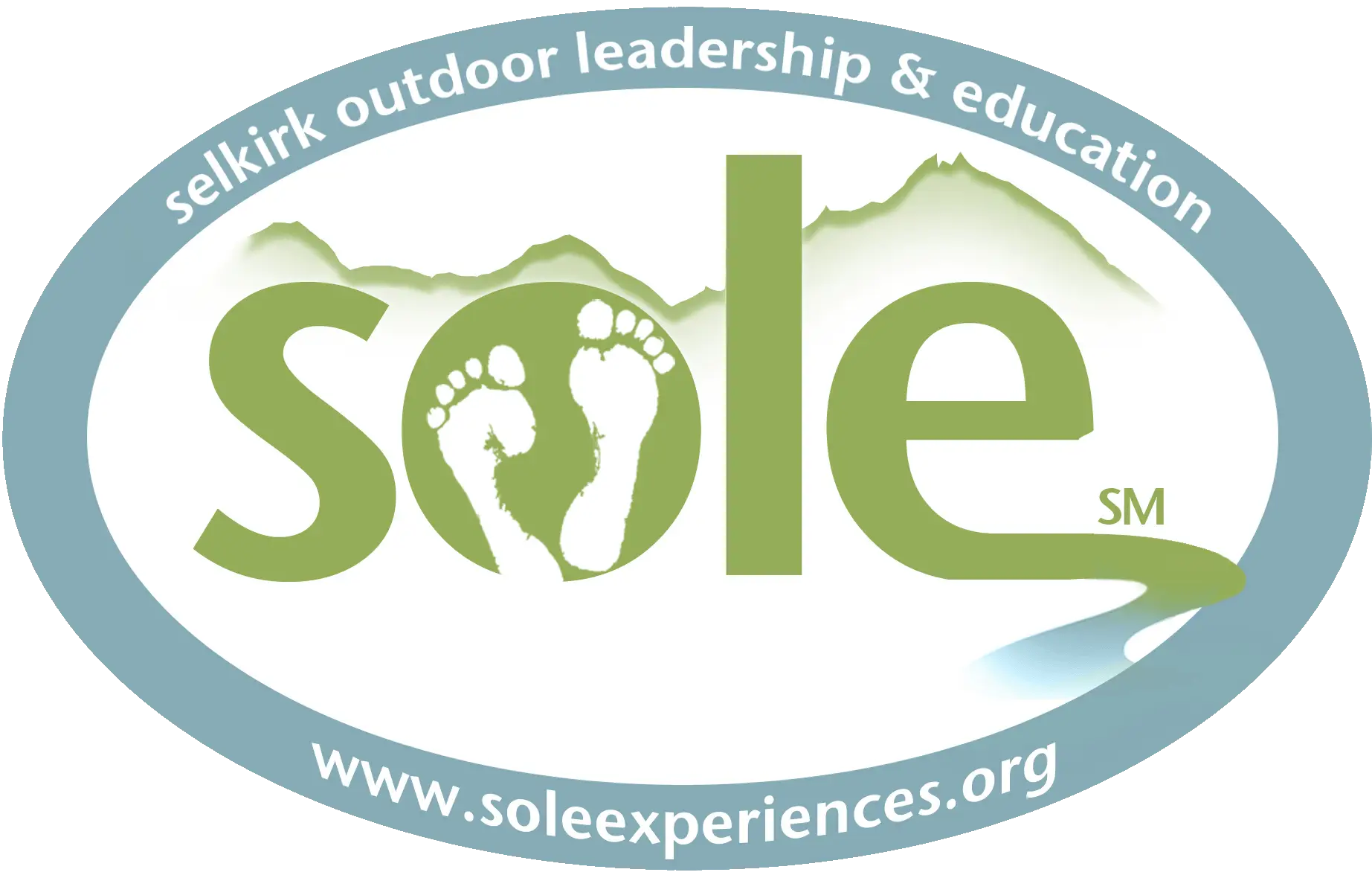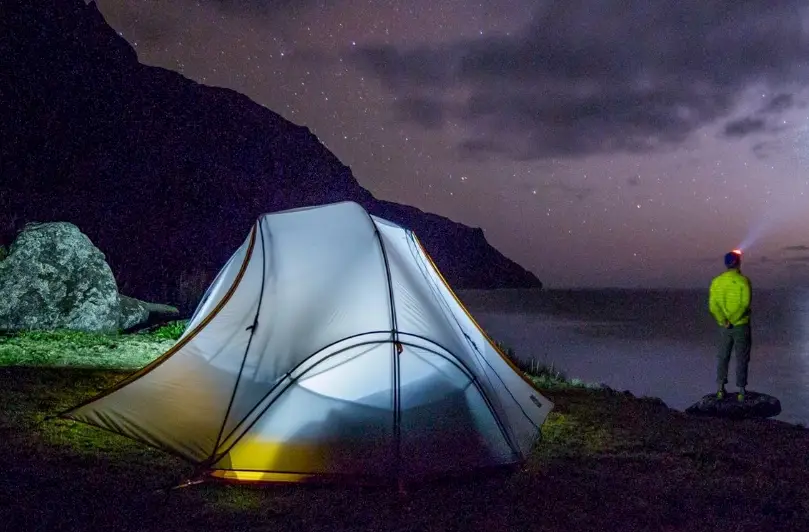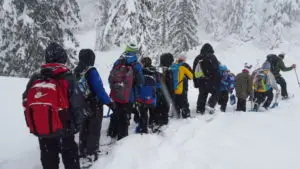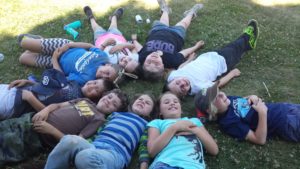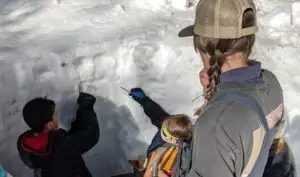As a Leave No Trace Center for Outdoor Ethics partner, SOLE prides itself on integrating Leave No Trace curriculum when teaching outdoor living and travel skills and assisting stakeholders with developing their own wildland ethic. Field Instructors with Leave No Trace Master Educator, Trainer, and Awareness Certifications are well-equipped at SOLE to educate our community near and far, about the benefits of considering and adhering to Leave No Trace outdoor skills and ethics. In fact, we are confident that educating our leaders of tomorrow how and why to “Leave No Trace” that we are providing the opportunity for our students to develop a sense of belonging and an affinity for nature through developing their own wildland ethic.
Let’s face it – the snap, crackle, and pop of a campfire has been, and will be, a part of the human outdoor experience for eons. What was mainly used as an outdoor tool over a million-and-a-half years ago, evolved over time into something far more impactful and memorable, rather than just a necessity like our early hominoid relatives. From ceremonial purposes, to sharing creepy stories, or whipping up some grub and S’mores with friends and family – fires continue to be a part of nearly everyone’s outdoor adventure.[/vc_column_text][/vc_column_inner][vc_column_inner width=”1/2″][vc_single_image image=”5865″ img_size=”large”][/vc_column_inner][/vc_row_inner][/vc_column][/vc_row][vc_row][vc_column][vc_column_text][perfectpullquote align=”full” bordertop=”false” cite=”” link=”” color=”” class=”” size=””]”The echoes of beauty you’ve seen transpire, Resound through dying coals of a campfire.” ~ Ernest Hemingway[/perfectpullquote][/vc_column_text][/vc_column][/vc_row][vc_row][vc_column][vc_message message_box_color=”juicy_pink”]So, with a drier-than-normal summer officially here, we wanted to reach out to our community and share some additional considerations and recommendations for your next outdoor adventure and make sure to that you and yours Minimize Campfire Impact as you do! Read the questions below and click on the arrows for my insight on how you can do just that, and still have some serious fun outdoors this summer.[/vc_message][/vc_column][/vc_row][vc_section][vc_row][vc_column][vc_toggle title=”Are there active fires or a fire ban in the area?” style=”arrow” custom_font_container=”tag:h2|text_align:left|color:%23a3231f” custom_use_theme_fonts=”yes” use_custom_heading=”true”] Before you even head out on your next outdoor adventure, it’s a good idea to consider checking on local reports. From potential wildlife encounters to active wildfires, it’s a good idea to check with the local land management agencies in the area you are going to and ask for any pertinent information that they can pass along. Great mapping sources include Inciweb and Erics websites.[/vc_toggle][vc_toggle title=”Do you really need a fire?” style=”arrow” custom_font_container=”tag:h2|text_align:left|color:%23a3231f” custom_use_theme_fonts=”yes” use_custom_heading=”true”]
Before you even head out on your next outdoor adventure, it’s a good idea to consider checking on local reports. From potential wildlife encounters to active wildfires, it’s a good idea to check with the local land management agencies in the area you are going to and ask for any pertinent information that they can pass along. Great mapping sources include Inciweb and Erics websites.[/vc_toggle][vc_toggle title=”Do you really need a fire?” style=”arrow” custom_font_container=”tag:h2|text_align:left|color:%23a3231f” custom_use_theme_fonts=”yes” use_custom_heading=”true”] Chances are you might not even need or want a fire. Yep, I said it. Especially with modern advancements campfires shift from a necessity to mostly aesthetic. if you plan accordingly. With fancy fabrics and NASA-level engineering, modern outdoor gear and clothing can keep you and yours warm and dry in style! In addition, there are times of year where campfires may be unsafe and uncomfortable (e.g., August wildfire season). Don’t fret there are plenty of ways for your kiddos to have fun and night without a campfire. From creating an astro-bivvy (sleeping outside on a ground pad and star-gazing) to reading or sharing stories by a headlamp stuck in a water bottle, there are ways to get creative and have fun when it gets dark without a campfire. Learn about other ideas here.[/vc_toggle][vc_toggle title=”Is there a pre-existing campfire ring or do you need a fire pan or fire mound?” style=”arrow” custom_font_container=”tag:h2|text_align:left|color:%23a3231f” custom_use_theme_fonts=”yes” use_custom_heading=”true”]
Chances are you might not even need or want a fire. Yep, I said it. Especially with modern advancements campfires shift from a necessity to mostly aesthetic. if you plan accordingly. With fancy fabrics and NASA-level engineering, modern outdoor gear and clothing can keep you and yours warm and dry in style! In addition, there are times of year where campfires may be unsafe and uncomfortable (e.g., August wildfire season). Don’t fret there are plenty of ways for your kiddos to have fun and night without a campfire. From creating an astro-bivvy (sleeping outside on a ground pad and star-gazing) to reading or sharing stories by a headlamp stuck in a water bottle, there are ways to get creative and have fun when it gets dark without a campfire. Learn about other ideas here.[/vc_toggle][vc_toggle title=”Is there a pre-existing campfire ring or do you need a fire pan or fire mound?” style=”arrow” custom_font_container=”tag:h2|text_align:left|color:%23a3231f” custom_use_theme_fonts=”yes” use_custom_heading=”true”] So you’ve decided you want and/or need a campfire? Beyond making sure there’s not a fire ban, there are some other things to consider. Is there a pre-established campfire ring? Perfect! Here at SOLE, we believe in the old adage “a good campsite is found not made”. It’s imperative use established fire rings, or use a fire pan when in the backcountry. Why? Once a campfire is established (used over and over with sustained heat) it sterilizes the ground underneath. The more campfires in an area, the less critical habitat for all critters big and small while maintaining a good vegetative buffer for alpine lakes. Often you’ll find soil compaction in these areas coupled with multiple fire rings inhibits the growth of smaller shrubs, grasses and hedges which your normally find and that are essential in these areas.[/vc_toggle][vc_toggle title=”When collecting firewood make sure to follow the 4 D’s” style=”arrow” custom_font_container=”tag:h2|text_align:left|color:%23a3231f” custom_use_theme_fonts=”yes” use_custom_heading=”true”]
So you’ve decided you want and/or need a campfire? Beyond making sure there’s not a fire ban, there are some other things to consider. Is there a pre-established campfire ring? Perfect! Here at SOLE, we believe in the old adage “a good campsite is found not made”. It’s imperative use established fire rings, or use a fire pan when in the backcountry. Why? Once a campfire is established (used over and over with sustained heat) it sterilizes the ground underneath. The more campfires in an area, the less critical habitat for all critters big and small while maintaining a good vegetative buffer for alpine lakes. Often you’ll find soil compaction in these areas coupled with multiple fire rings inhibits the growth of smaller shrubs, grasses and hedges which your normally find and that are essential in these areas.[/vc_toggle][vc_toggle title=”When collecting firewood make sure to follow the 4 D’s” style=”arrow” custom_font_container=”tag:h2|text_align:left|color:%23a3231f” custom_use_theme_fonts=”yes” use_custom_heading=”true”]
 So you’ve decided that you need or want a fire, there is no fire ban in the area, and you found an existing fire ring or are going to use a fire pan. When gathering your firewood make sure you follow the 4 D’s to build a Leave No Trace campfire.
So you’ve decided that you need or want a fire, there is no fire ban in the area, and you found an existing fire ring or are going to use a fire pan. When gathering your firewood make sure you follow the 4 D’s to build a Leave No Trace campfire.
-
-
-
-
- Dead: Wood that has been dead long enough to be dry.
- Down: Physically separated and down from living trees.
- Dinky: Smaller in girth, than one’s wrist or forearm. Easy to break and to burn completely through.
- Distant: Wood should be collected 200 feet from camp to avoid firewood mining and the effects of site creep.
-
-
-
[/vc_toggle][vc_toggle title=”Did you make sure your fire was extinguished?” style=”arrow” custom_font_container=”tag:h2|text_align:left|color:%23a3231f” custom_use_theme_fonts=”yes” use_custom_heading=”true”]
One of the most important considerations as you enjoy your campfire is to monitor it from start to finish. An unattended fire has potential to do a lot of harm. At SOLE, we recommend having water on the ready to extinguish the fire quickly if necessary. A simple cooking pot filled with water will do.
In addition, we recommend to make sure to burn all your wood completely to ash. This is another reason to use “dinky” wood so that this easier to accomplish. This also allows you to physically feel the ash and make sure that it is cool to the touch. If you find a “hot spot” make sure to add water to completely extinguish any remaining embers, and stir with a stick until fully extinguished. Once the fire is fully extinguished, if not using an existing fire ring carry the remaining debris from your fire pan 200’ into the woods and dispose of it by using the dispersal method.[/vc_toggle][/vc_column][/vc_row][vc_row][vc_column][vc_column_text]While campfires are an enjoyable part of our outdoor experience, they have the potential to do more harm than good, especially in remote backcountry settings. Campfire impacts like fire scaring (e.g., on ground, rocks, etc), tree damage (e.g., from hatchets, axes), and even wildfires are all preventable with some awareness and action. As a result, front and backcountry users can minimize their impact when using campfires.[/vc_column_text][vc_column_text]SOLE teaches outdoor living and travel skills such as Leave No Trace during much of its day-based and expedition-based backcountry programs – in addition we offer stand-alone outdoor skill workshops. For more information on SOLE’s programs and/or to register for an upcoming SOLE Experiences & Events go to here or simply contact us!
We hope you all enjoyed this episode of our SOLE Leave No Trace Series, and hope to see you “out there”![/vc_column_text][/vc_column][/vc_row][vc_row][vc_column width=”1/2″][vc_row_inner][vc_column_inner width=”1/2″][vc_single_image image=”4644″][/vc_column_inner][vc_column_inner width=”1/2″][vc_column_text]
Dennison Webb, MA
Founder & Executive Director[/vc_column_text][/vc_column_inner][/vc_row_inner][/vc_column][vc_column width=”1/2″][/vc_column][/vc_row][/vc_section][vc_row][vc_column][/vc_column][/vc_row]
